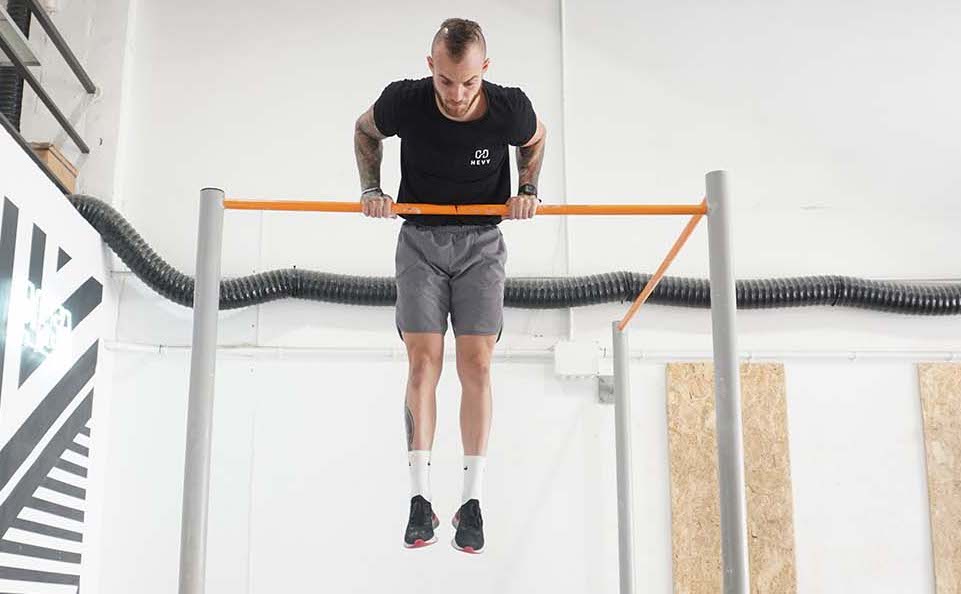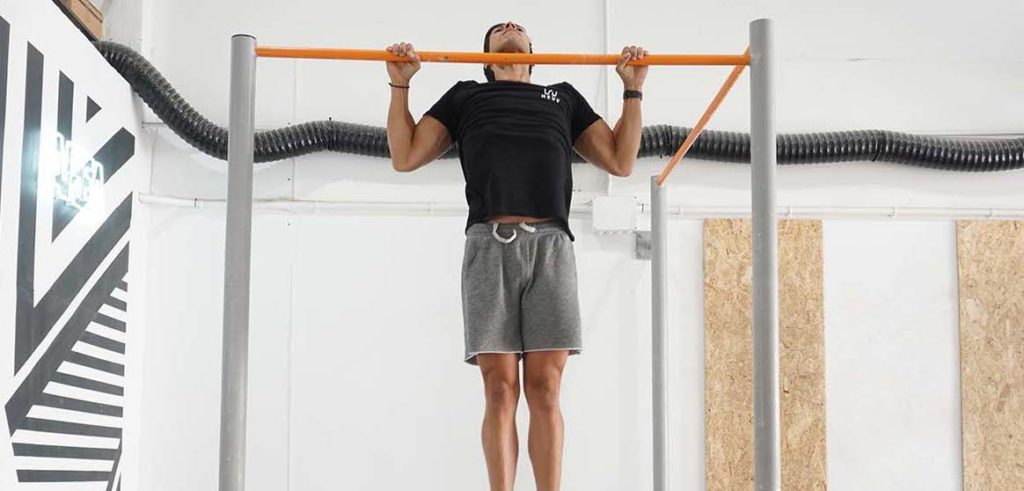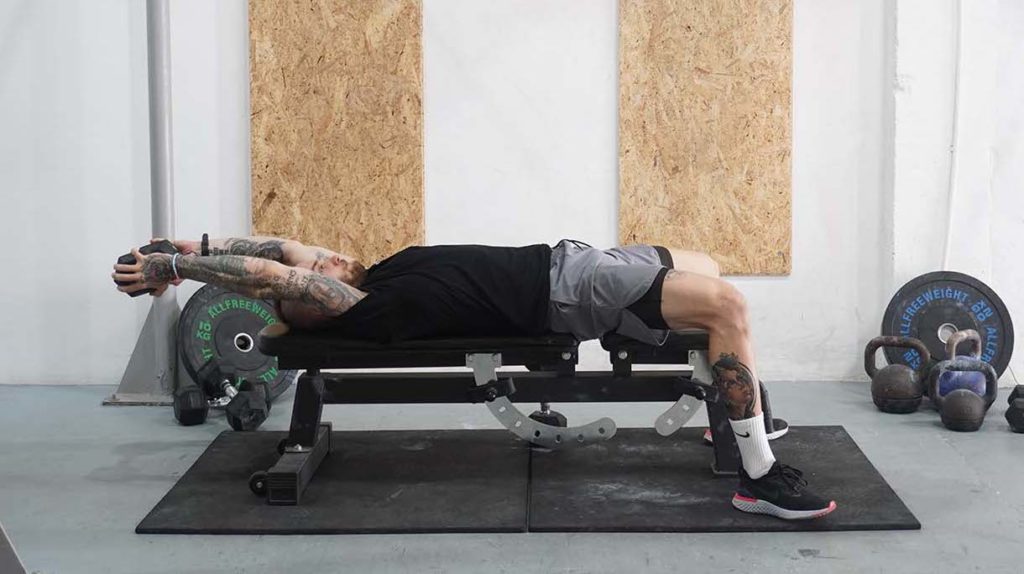The Benefits of the Muscle Up
Muscle ups are arguably one of the coolest-looking and most impressive calisthenics exercises. The movement is relatively straightforward, but performing it requires tremendous upper body strength, explosiveness, and control.
To anyone unfamiliar, the muscle up begins by hanging from a horizontal bar, not much different from the starting position of a pull-up. But, instead of pulling yourself up slowly, you must go up explosively, aiming for your chest to reach the bar. From the position, you must use the momentum you’ve created to continue moving up as you rotate your arms and shoulders, transitioning into a straight bar dip. Your chest, shoulders, and triceps take over the movement, allowing you to complete the repetition through elbow extension.
A notable benefit of muscle ups is that you’re developing several major muscle groups in your body. The muscle up starts by working your back, biceps, and forearms. You then transition into a straight bar dip, which works your shoulders, chest, triceps, and serratus anterior. During that time, your entire core works to keep you stable, allowing you to put all of your force into the bar.
Performing the muscle up on a bar is more accessible than rings because the stability requirements are smaller. Using rings forces your stabilizing muscles to work much harder without allowing the rings to move apart and kill your momentum.
As one of the most technical and challenging movements you could do, we recommend performing muscle ups first in your training, regardless of your athletic level. Doing so is beneficial for maintaining proper technique, staying safe, and taking full advantage of muscle ups.
Level of Exercise: Advanced
How to do a Muscle Up
_Back_small.jpg)
- Stand one foot behind a pull-up bar, reach up, jump, and grab it with a double overhand grip (palms facing forward). Have your hands shoulder-width apart. Jumping from the position and grasping the bar will create some natural momentum, causing you to swing back and forth if you don’t do anything else.
- As you grab the bar, engage your abs, have your shoulder blades back, and keep your hips slightly flexed, legs straight, and feet together. Doing all of this in a couple of seconds as you jump and grab the bar will take some practice.
- As your body beings to swing back, pull yourself up as powerfully as possible, aiming to bring your body back and around the pull-up bar. The momentum should carry you high enough, so your chest ends up slightly higher and over the bar. Doing so will cause your shoulders to rotate and your forearms to become vertical.
- Once in position, perform a straight bar dip to extend your elbows.
- Hold the top position for a moment and exhale.
- Lower yourself by first bending your elbows and then moving your body down from the bar in a controlled fashion.
- Once you’ve lowered yourself, swing back and forth to create momentum and begin the next repetition just as your body starts swinging back.
What muscles does the muscle up activate?
The latissimus dorsi (lats) is the primary muscle group involved in muscle ups. Our lats cover a significant portion of the mid and upper back, and the muscle attaches to the humerus (upper arm bone), contributing to numerous arm motions (1). The lats produce a lot of force for us to pull ourselves up and over the bar. Other upper back muscles, including the rhomboids, erector spinae, trapezius, rear deltoids, and infraspinatus, assist the lats for stability and pulling.
Our biceps and brachialis also contribute to the muscle up. Both muscles lie on the front side of our upper arms and produce elbow flexion, which is necessary for moving up during the muscle up (2, 3). Similarly, the brachioradialis, a muscle that covers the top of our forearms, contributes to elbow flexion (4).
The shoulders (deltoids) also play an essential role during the muscle up. Our delts provide stability at the shoulder joint, contribute during the transition from a pull-up to a straight bar dip, and assist during the final portion of the exercise (5). The anterior deltoid head helps the pectoralis major and triceps during the push portion of a muscle up.
Speaking of the pecs and triceps, both muscle groups work during muscle ups. As we perform the pull-up and get our chest over the bar, the shoulders, chest, and triceps work together to extend our arms and complete the repetition. These muscles continue to work as we start lowering ourselves and play a significant role until we transition into the negative portion of the pull-up.
Aside from the above, our entire core musculature engages, allowing us to remain stable and transfer force into the bar.
How to Build up the Strength to Progress into a Strict Muscle Up
The muscle up combines three movement patterns, and learning each is necessary for mastering the advanced movement. Specifically, a muscle up combines pull-ups, straight bar dips, and hanging knee raises. Practicing each will strengthen the muscles involved in a muscle up, making it easier to string everything together into a complete repetition.
Pull-ups are the first upper body exercise to focus on, and you should work your way to at least ten bodyweight repetitions if you hope to practice muscle ups. The stronger your pull-up is, the higher you’ll be able to pull your body initially, making it easy to rotate your arms and transition into the straight bar dip.
Straight bar dips are the second movement pattern in a muscle up. Once you’ve pulled yourself up and your chest is over the bar, you’ll need to extend your elbows to complete the repetition. Similar to the pull-up, we recommend working up to at least ten bodyweight repetitions to ensure that all involved muscles are strong enough.

Hanging knee raises are the third exercise with a significant role in the muscle up. Though it might not seem that important, the knee raise develops core strength, making it easier to generate momentum by swinging and accelerating yourself into the top position.
Once you’ve been doing these three movements and are reasonably comfortable with each, it becomes a matter of putting them together and learning how to practice a muscle up. One good option is to start with negative muscle ups where the objective is to reach the top position by jumping from an elevated surface (e.g., a bench) and lowering yourself slowly. You can also use the jumping muscle up where you jump from an elevated surface to eliminate the pull-up, perform the dip, and lower yourself.
Variations and Modifications of the Muscle Up
1. Jumping Muscle Up
Jumping muscle ups are a useful variation you can perform to learn the standard exercise. The objective is to stand on an elevated object, such as a gym bench or plyo box, so the pull-up bar is at neck level. Grab the bar, brace your body, and jump to bring your chest over the bar. Perform the straight bar dip and lower yourself as you usually would.
2. Negative Muscle Up
Like the jumping muscle up, negatives are valuable for teaching you the proper muscle up technique even if you don’t have the necessary strength. Set yourself up as you would for a jumping muscle up, and jump to the top position. From there, lower yourself for five to ten seconds and repeat.
3. Weighted Strict Muscle Up
The weighted muscle up is an advanced variation of the movement. Attach a weight plate to yourself via a special belt and perform the activity as you usually would.
Mistakes to Avoid
Dropping to the Bottom
One of the most common errors with strict muscle ups is not controlling your body on the way down. Trainees often focus on moving up but drop to the starting position, causing unnecessary stress to their joints and connective tissues. Dropping with no control also makes you lose out on the critical eccentric portion of each repetition, making the exercise less effective. Avoid the error by being mindful of the ‘up’ and ‘down’ portions, ensuring that both last for the same length.
Performing ‘Chicken Wing’ Muscle Ups
The second common error is performing what’s known as the ‘chicken wing’ muscle up, which means rotating one shoulder at a time. People new to the exercise often lack the necessary strength to get their chest over the bar in one fluid motion, so they rotate one arm at a time, causing significant stress to the shoulder joint. Avoid the error and develop your foundational upper body strength for muscle ups through strict pull-ups, straight bar dips, and hanging knee raises.
Similar Exercises to the Muscle Up
Pull Up

As discussed in a previous point, the pull-up is essential for your muscle up because it makes up the first half of each repetition. Improving your pull-up will develop many muscles involved in muscle ups and improve your ability to bring your chest over the bar and transition into the straight bar dip (6).
Pullover (Dumbbell)

Dumbbell pullovers are not similar to muscle ups, but the movement pattern strengthens your lats and shoulders, improving your ability to pull yourself up and transition into a dip. A pullover movement pattern is similar to the one you perform as you move from a pull-up into a dip, and the primary difference is that you’re pulling your body over the bar instead of an external weight.

